Fundamental Concepts of Operating Systems
1/162
There's no tags or description
Looks like no tags are added yet.
Name | Mastery | Learn | Test | Matching | Spaced |
|---|
No study sessions yet.
163 Terms
Operating System
A layer of abstraction between Hardware and Software
Acts as a "virtual machine" - emulates a machine making it easier for the software to do operations - a resource coordinator, and reactive system
A collection of programs that integrate the hardware resources of the computer and make those resources available to the use in a productive, timely, and efficient manner
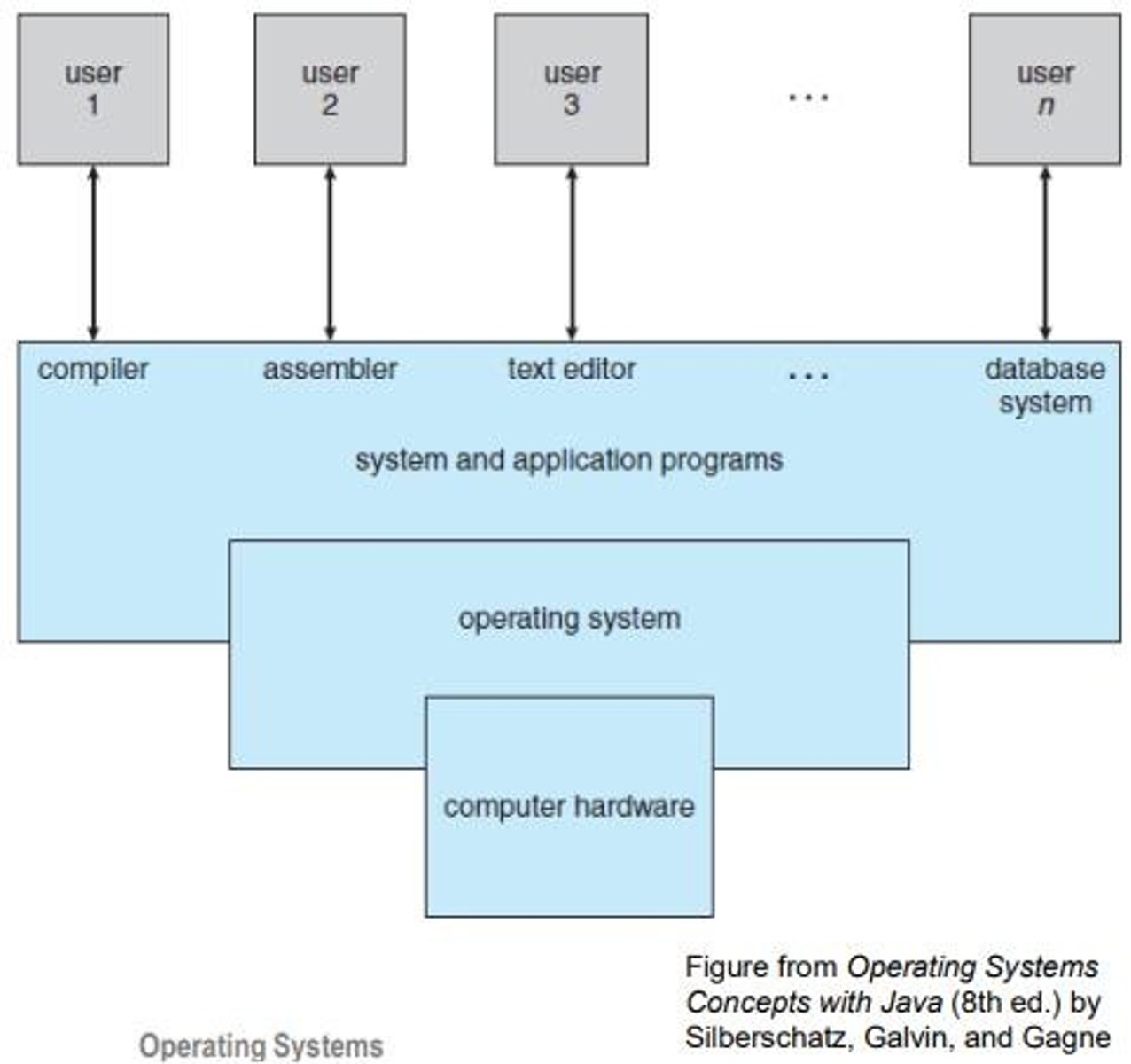
Batch Processing
Processes jobs in groups without user interaction.
SPOOLing
Simultaneous Peripheral Operation On-Line.
Reads jobs ahead onto disk for efficiency.
Multiprogrammed Systems
-Provides increased utilization
-Keeps several jobs in memory simultaneously
-I/O processing of one job overlaps with computation of another
-Needs CPU scheduling
-Makes sure the CPU is always busy
Time Sharing Systems
Allows multiple users to share resources interactively.
-Multiple users acting on the same resource
-Supported interactive use
-Each user feels they have the entire machine
-Tries to optimize response time
-Based on time-slicing
"Time slice"
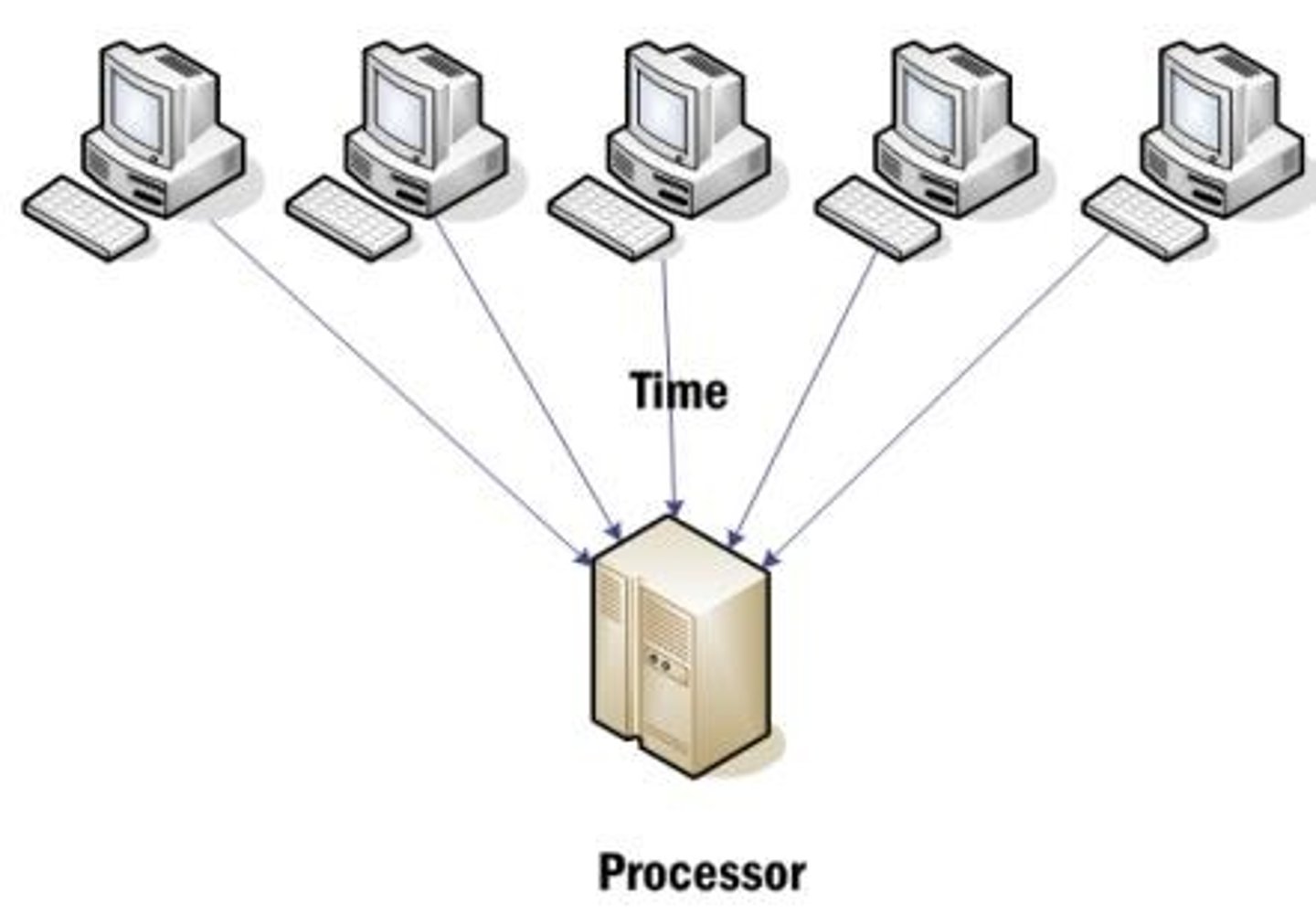
Time Slice
Rapid switching between users for responsiveness.
Desktop Systems
Personal computers that emerged in the 1970s.
Mainframe Systems
Large, powerful computers for bulk data processing.
-Modular, designed with redundancies - so that operations continue even after one part fails
-Adding more storage or peripherals, or maintenance, does not require turning the computer off
-In a year of usage, downtime can only be hours long
I/O Processing
Handles input/output operations for tasks.
Interactive Use
Users engage with the system in real-time.
High-Level Interface
User-friendly interaction through GUI or command line.
Offline Processing
Jobs processed without immediate user interaction.
Multiprocessor Systems
Multiple processors working simultaneously on tasks.
Also known as Parallel Systems/Tightly-Coupled Systems
Advantages of Multiprocessor Systems
Increased Throughput, Economy of Scale, Increased Reliability
Symmetric Multiprocessing (SMP)
All CPUs perform identical tasks.
Asymmetric Multiprocessing
CPUs assigned specific roles for tasks.
Graphics Processing Units (GPUs)
Specialized processors for rendering graphics.
Distributed Systems
Geographically-distributed computing resource utilization.
Also known as Loosely-computed Systems
Clustered Systems
Multiple CPUs working together via a LAN.
Real-Time Systems
Guaranteed response to events within fixed time.
Hard Real-Time Systems - Critical deadlines for device control applications.
Soft Real-Time Systems - Important deadlines, but not critical.
Handheld Systems
Devices like PDAs and mobile phones.
General Structure of an O/S
Resident Programs, Non-Resident Programs
Resident Programs
Critical programs always in memory, like KERNEL.
Non-Resident Programs
Loaded into memory only when needed.
Dual-Mode Operation
User and kernel modes for system security.

Components of an O/S
Management: Process, Main Memory, File, I/O System, Secondary Storage
Networking, Protection System
Process Management
Controls process execution and state tracking.
Main Memory Management
Allocates and deallocates memory for processes.
File Management
Maintains file information and directory structure.
I/O System Management
Standardizes access to input/output devices.
Secondary Storage Management
Manages disk space allocation and scheduling.
Networking
Protocols for data transfer and connection strategies.
Protection System
Controls access to programs and user processes.
Command Interpreter System
Interface for user commands via various input methods.
Architectures
Monolithic, Layered, Virtual Machine, Microkernel
Monolithic Architecture
Single large kernel; minimal structure, no security.
Layered Architecture
Components organized in layers; requires traversals.
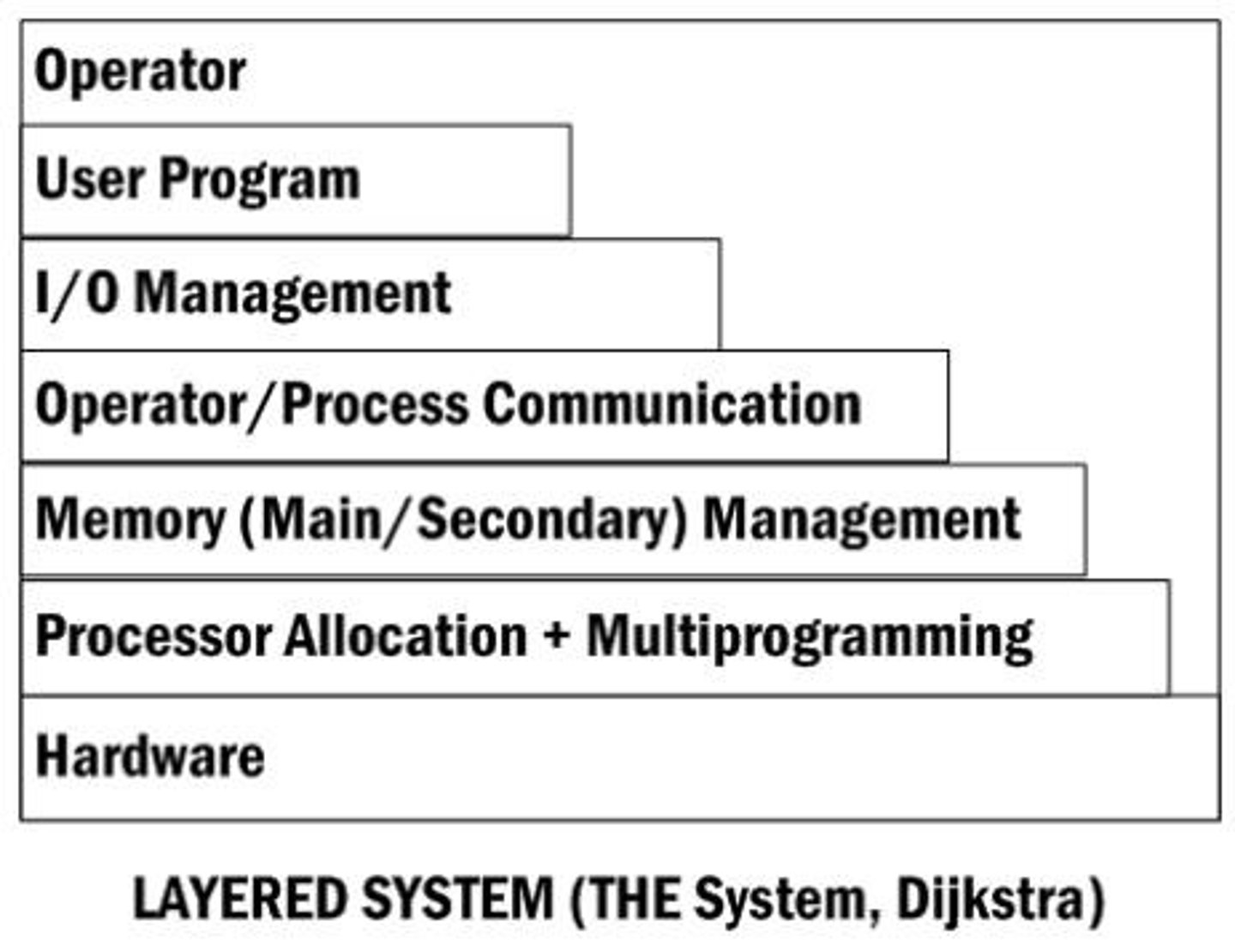
Virtual Machine
Multiple systems run on a single machine.
Microkernel
Minimal kernel; controls O/S with modularity.
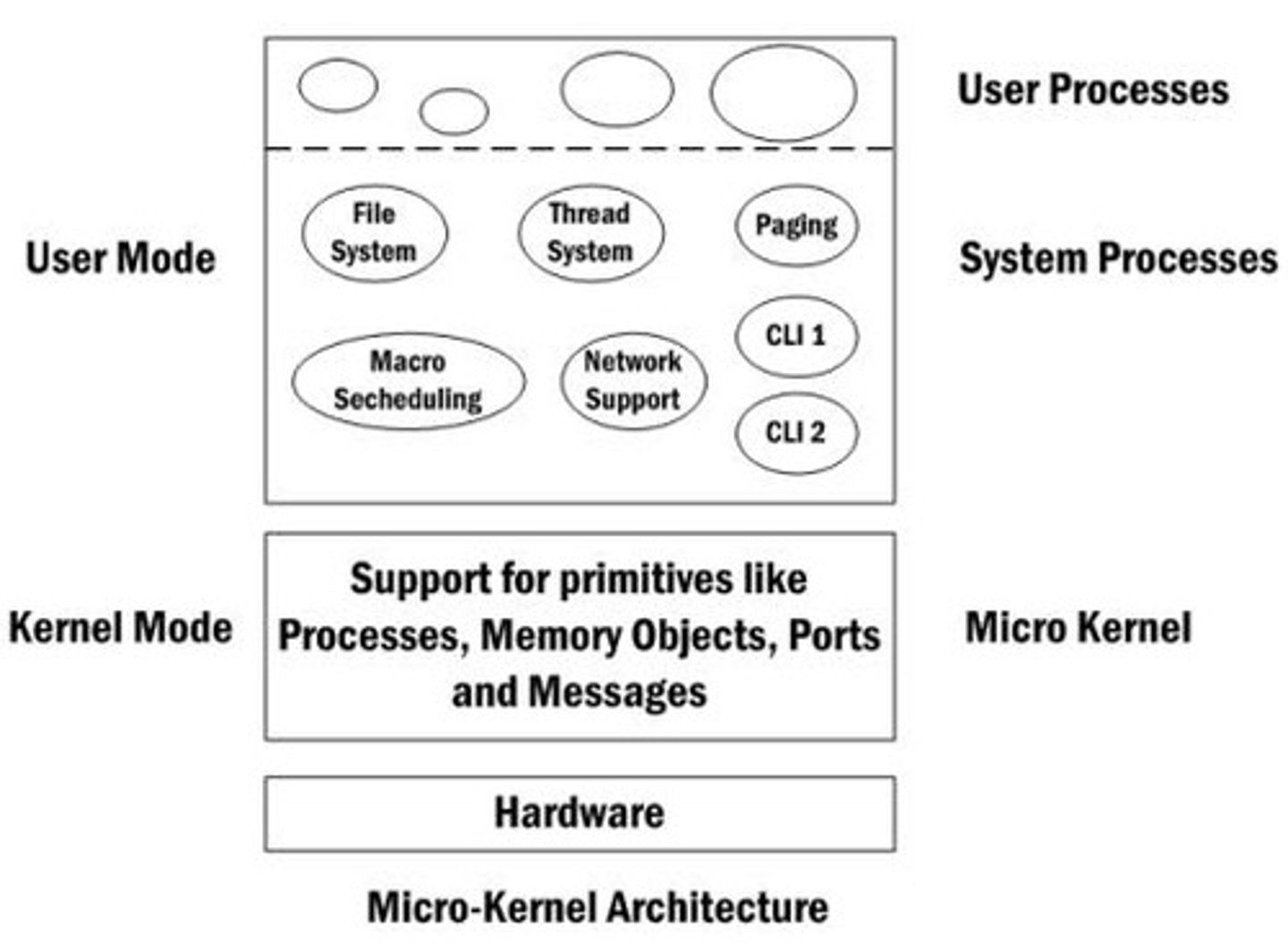
UNIX Operating System
Developed by Ken Thompson and Dennis Ritchie.
MULTICS
Multiplexed Information and Computer Services
Early time-sharing O/S; faced development issues.
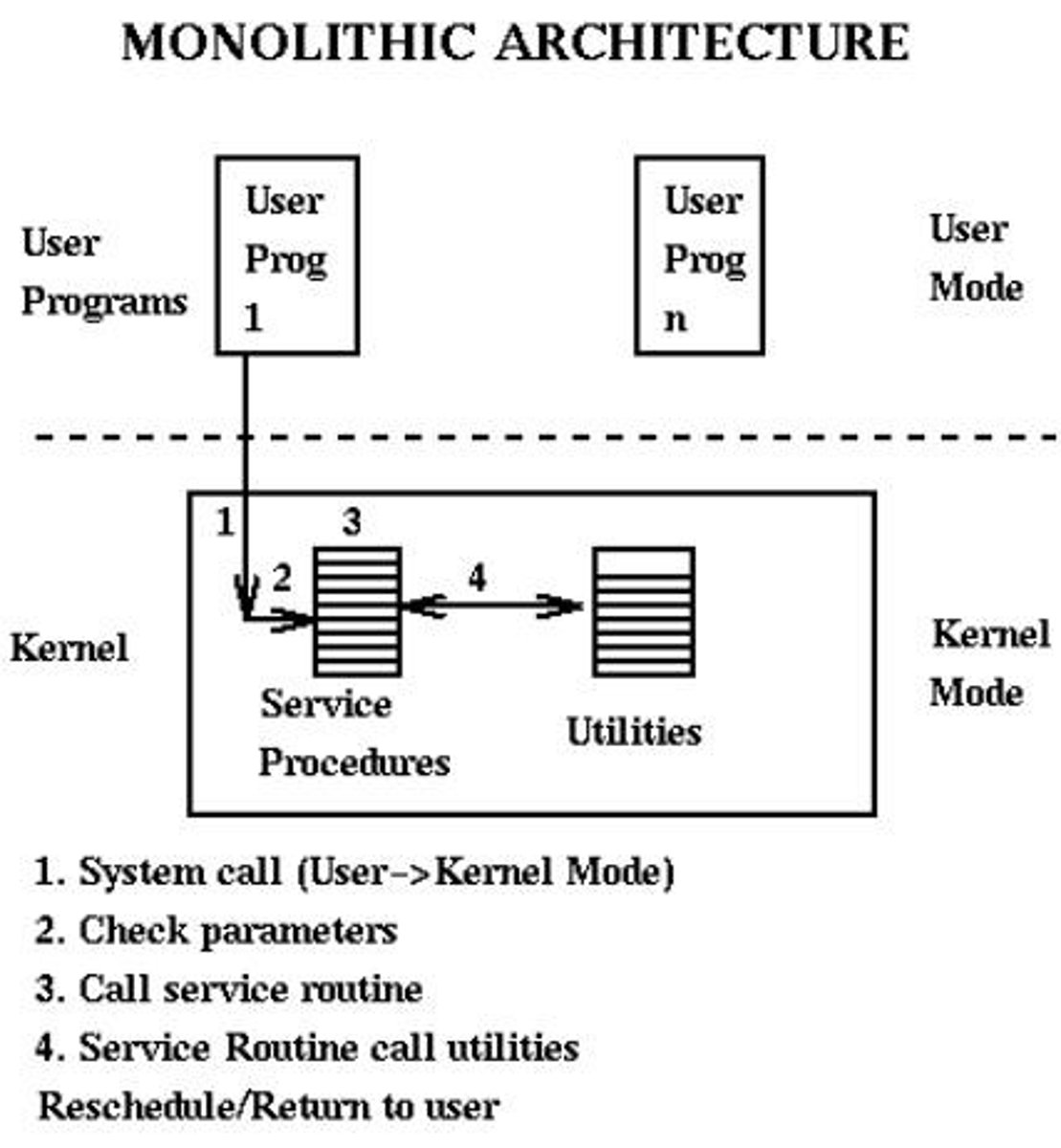
UNICS
Uniplexed Information and Computer Services
Single-task system; precursor to UNIX.
PDP-7
First hardware used to develop UNIX.
PDP-11/20
Second version of UNIX developed here.
Version 3
Used C, Developed in Bell Labs to support Unix
Implements Multiprogramming, Multitasking
Version 6 UNIX
1976, First version distributed outside Bell Labs.
Version 7 UNIX
1978, Considered ancestor of modern UNIX systems.
Unix Design Philosophy
Focus on simplicity, interactivity, and elegance.
UDP Principles
Programs should do one thing well.
Write programs to work together.
Write programs to handle text streams, because that is a universal interface.
3BSD
First implementation of virtual memory in UNIX.
4 BSD
Standard system developed for government use.
4.2BSD
Enabled communication across diverse network facilities.
C Shell
New user interface introduced in 4.2BSD.
Text Editor (vi)
New text editor introduced in 4.2BSD.
Berkeley DARPA Unix
Original project leading to modern Unix systems.
4.4 BSD
Last Berkeley release with significant enhancements.
Includes x.25 networking, new file system organization, enhanced security, improved kernel structure
Berkeley stopped its research after this release
Now
-Currently not limited to Bell, AT&T, Berkeley
-Moved to many different computers
Sun Microsystem - ported BSD to their workstations
DEC - Ultrix, OSF/1
Microsoft - Xenix, Windows/NT heavily influenced by Unix
Santa Cruz Operations - SCO, Linux
-Standardization projects for Unix Environments
IEEE, ISO, ANSI, etc.
1989 - ANSI standardized C (ANSI C)
-Single Unix Specification (SUS)
Latest SUS - two parts:
Base specifications - technically identical to POSIX
X/Open Curses specification
Some parts of the SUS are optional
Unix Design Principles
Guidelines emphasizing simplicity and time-sharing.
Unix Shell
Command interpreter executing user and system commands.
Bourne Shell
First Unix shell with $ prompt by Steve Bourne.
BASH
Bourne Again Shell, free alternative to Bourne shell.
Unix File System
Hierarchical structure managing files and directories. Everything is a file!

Three-tiered Security Structure
Owner, group, universe access levels in Unix.
File Links
Multiple names for the same data clusters.
Ordinary Files
Data stream stored on a device
Directory Files
Files used to access hardware components.
If a file has files below it in the hierarchy, it must be a directory, otherwise, it is an ordinary file or an empty directory file
A directory does NOT contain other files, rather just contain links to them
Different links can be made to the same instance of a file - different directories can link to the same file
System Calls
Interface for user programs to request OS services
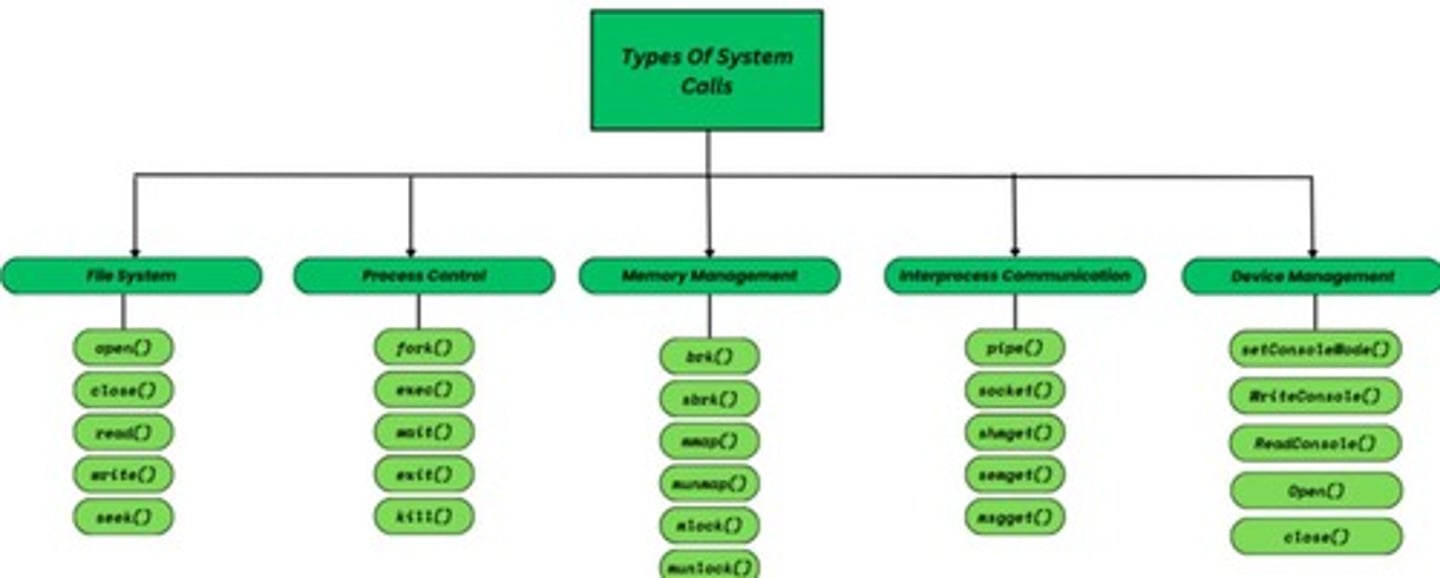
Dual-mode Operation
Switching between user mode and kernel mode
Categories of System Calls
Process control, file manipulation, device manipulation
Processes
- Any program in execution
- All CPU activity
Job - unit of work in batch systems.
User Program - A task in time-sharing systems.
Process States
Different stages a process can be in.
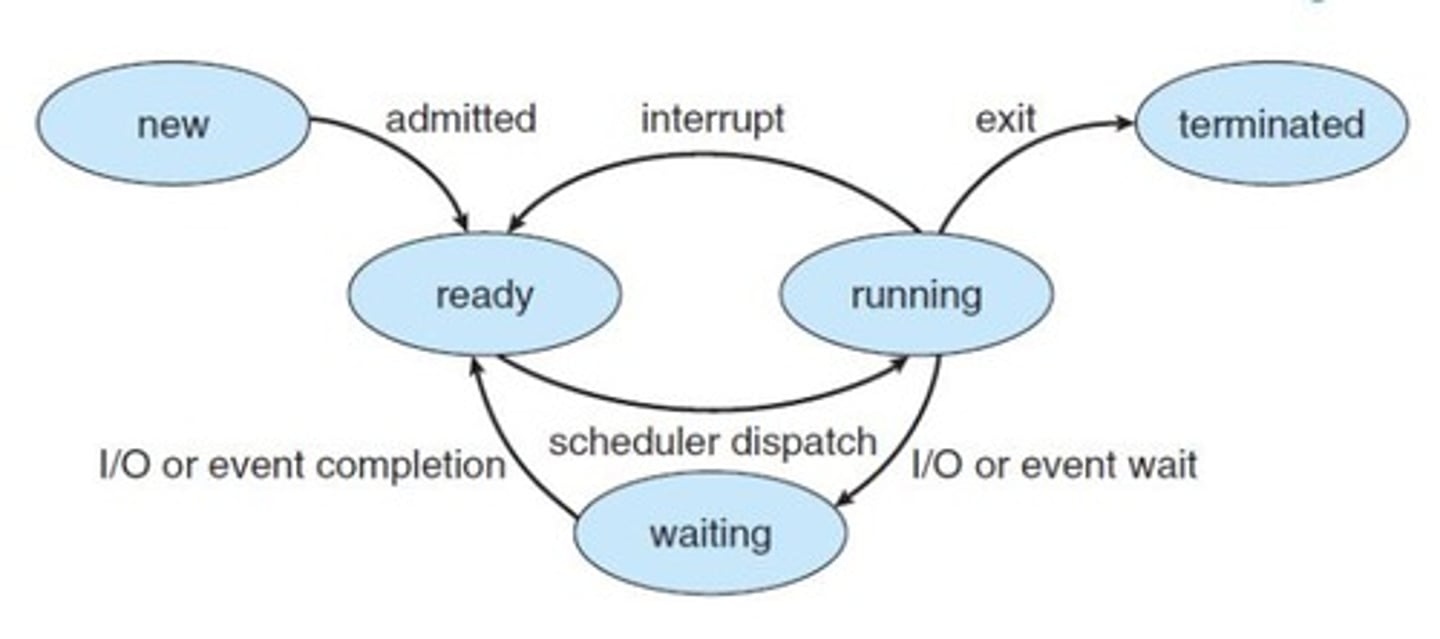
Process Control Block (PCB)
Data structure containing process information:
-Process state
-Program Counter
-CPU Registers
-Process Priority
Process Queue
Job Queue - Contains all processes in the system.
Ready Queue - Processes waiting in main memory for execution.
I/O - Processes waiting for I/O device access.
Process Scheduler
Long-term Scheduler, Short-term Scheduler
Long-term Scheduler (Job)
Loads processes from storage to memory.
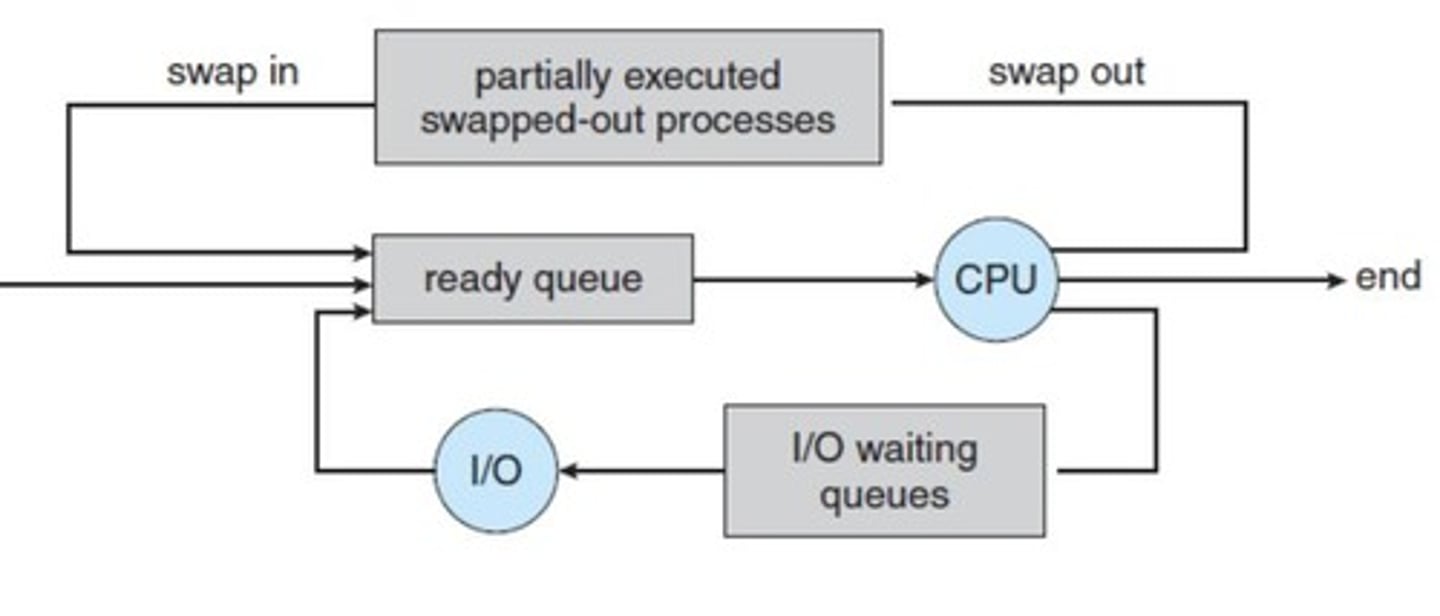
Short-term Scheduler (CPU)
Allocates CPU to processes in ready queue.
Medium-term Scheduler
Swaps processes in and out of memory.
CPU Scheduling
Selecting processes for execution on CPU.
Process Types
CPU Bound: more time computing
I/O bound: more time doing I/O
Context Switching
Switching from one process to another.
Independent Process
Does not share data with other processes.
Dependent Process
Can affect or be affected by other processes.
Cooperation
Processes working together for shared goals.
Information Sharing, Computation Speedup, Modularity
Information Sharing
Resources shared among processes to avoid duplication.
Computation Speedup
Parallel processes share CPU for faster results.
Modularity
Breaking down large processes into smaller, efficient ones.
Threads
Lightweight processes with shared resources.
Multithreading
Running multiple threads within a single task.
Tasks
Heavyweight processes that can be divided into threads.
Peer Threads
Threads that cooperate to form a task.
Interprocess Communication
Methods for processes to exchange information.
Message Passing
Sending messages between processes via kernel.
Shared Memory
Memory area accessible by multiple processes.
Direct Communication
Explicitly names the process for message passing.
Indirect Communication
Messages sent through a shared mailbox.
Message Queue
Buffer for storing messages in communication.
Bounded Queue
Queue with a limit on message capacity.
Unbounded Queue
Queue limited only by system memory.
Producer-Consumer Problem
Example of dependent processes generating and handling data.
Concurrent Access
Multiple processes accessing shared data simultaneously.